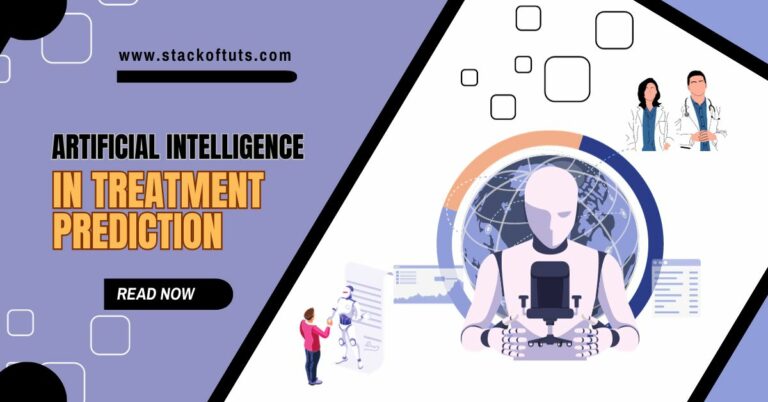
The integration of artificial intelligence (AI) into healthcare has revolutionized the way we approach medical data. Specifically, using AI for electronic health record data analysis has opened up new avenues for extracting insights, predicting patient outcomes, and enhancing care delivery.
In this article, I will discuss how AI tools are playing a pivotal role in interpreting complex data from electronic health records (ehrs), helping to transform it into actionable knowledge for healthcare providers.
Define artificial intelligence
Artificial intelligence refers to the simulation of human intelligence processes by machines, especially computer systems. These processes include learning, reasoning, and self-correction. AI’s capability to analyze vast datasets far exceeds the human brain’s capacity, making it an invaluable asset in various sectors, including healthcare.
For a complete guide also read about Top Healthcare Artificial Intelligence Software dive into this link for exclusive insights and captivating discoveries!
The importance of electronic health records
Electronic health records (EHRs) are digital versions of patients’ paper charts. They contain a wealth of information, from medical history to diagnostics and treatment plans. The vast amount of data they contain is both a challenge and an opportunity; while it’s too copious for manual analysis, it’s ripe for AI-powered tools that can uncover patterns and insights at an unprecedented scale.
Benefits of AI in electronic health records data analysis
Using AI for electronic health record data analysis brings a multitude of benefits to the healthcare sector. From identifying at-risk patients to enhancing the overall health of populations, AI’s role is both transformative and multifaceted
Identifying at-risk patients

- AI tool used: predictive analytics software
AI algorithms are exceptional in their ability to sift through massive amounts of data to identify patients who are at risk of developing specific diseases or conditions. By analyzing patterns in the data that might go unnoticed by humans, these algorithms can predict which patients are more likely to suffer from conditions like heart disease or sepsis.
For example, an AI-powered tool, such as Cerner’s health intent, can trawl through the data, looking for hidden correlations and warning signs that may indicate a patient’s risk. This predictive capacity enables healthcare providers to intervene much earlier, providing preventative care that could save lives.
Personalizing treatment plans

- AI tools used: machine learning platforms
Personalized treatment plans are another area where AI shines. Platforms powered by machine learning algorithms, like IBM Watson Health, take individual patient data and analyze it to tailor treatment strategies. This AI-driven personalization considers a person’s unique medical history, genetic information, and even lifestyle factors.
The impact of this is profound: treatments are better suited to each patient, which can lead to enhanced outcomes. Moreover, AI helps to minimize unnecessary interventions, which can save costs and reduce patient exposure to potentially unneeded medications or procedures.
Enhancing patient safety

- AI tools used: clinical decision support systems
Patient safety is paramount, and AI aids this by identifying potential hazards that could lead to medical errors. Clinical decision support systems integrated with AI, such as those developed by Epic Systems, scan for and alert healthcare providers about medication interactions or the possibility of duplicate tests.
An AI system could flag a risky drug combination that might otherwise be prescribed, or it could notify a physician if a patient is about to undergo a redundant laboratory test, thereby avoiding potential harm and waste of resources.
Improving population health

- AI tools used: big data analytics tools
On a broader scale, AI excels at enhancing population health by analyzing large volumes of data to spot trends and patterns. Big data analytics tools, like those from SAS, play a pivotal role in this regard. They can process the health data of millions of individuals to uncover valuable insights into public health.
These insights enable health authorities to better understand and manage public health issues, target interventions more effectively, and make informed decisions about where to allocate resources. The potential for AI to inform and guide public health policy based on data-driven insights is tremendous, opening doors to more resilient and responsive healthcare systems.
Challenges and Reflections on Utilising AI with Electronic Health Records

The incorporation of AI into the analysis of electronic health records (EHR) is poised to vastly enhance healthcare. However, this pioneering approach comes with its own set of obstacles and critical points for consideration.
Data integrity and uniformity
Quality and uniformity in EHR data stand as significant hurdles. Flawed or non-standardized data can skew AI assessments. Tackling these issues demands rigorous data purification and the harmonization of formats and terminologies across various EHR platforms. This means meticulously rectifying errors, filling gaps, and aligning disparate data elements into a coherent whole.
Safeguarding patient information
Given the sensitive nature of EHRs, stringent measures to ensure the confidentiality and security of this data are non-negotiable. Employing stringent access controls, advanced encryption, and the anonymization of records are key to protecting patient privacy. Additionally, well-defined governance models must be in place to monitor the application and distribution of EHR data within AI frameworks.
Bias and Equity in Algorithms
There’s a risk that AI may inadvertently echo biases present in its training data, leading to skewed or prejudiced outcomes. To curb this, we must scrutinize the data sources, apply techniques to identify and neutralize biases, and seek inclusive participation in developing AI tools.
Clarity and Openness in AI Processes
The complex nature of AI systems often results in a “black box” phenomenon, where the decision-making process is obscured. To foster trust and responsibility in AI decisions, it’s imperative to develop AI models that are decipherable and transparent. Techniques in Explainable AI (XAI) are crucial to demystifying the workings of AI algorithms and making their decisions understandable to end-users.
Broader Perspectives
Beyond these core challenges, there are additional aspects to consider in the application of AI in EHR analysis:
- Clinical Involvement: The insights and experience of healthcare professionals are invaluable to the AI creation process. They can offer critical insights into data selection, model construction, and outcome interpretation.
- Regulatory Guidelines: The healthcare sector needs well-defined regulatory guidelines to oversee the integration of AI in clinical decision-making. These regulations should address data protection, algorithmic transparency, and bias to ensure the ethical use of AI.
- Patient Participation: Patients deserve clarity regarding the AI tools interacting with their health records. They must be educated about how AI may be used in their care and what it means for them in terms of benefits and potential limitations.
FAQs
AI enhances diagnostic accuracy by analyzing EHR data to identify patterns and anomalies that may not be evident to the human eye. It uses machine learning algorithms to compare patient data with vast datasets, leading to more precise diagnoses.
Yes, AI can predict patient outcomes by employing predictive analytics to assess risk factors and forecast potential health events. This can lead to early interventions and customized treatment plans to improve the patient’s prognosis.
AI systems designed for EHR analysis are built with robust security protocols. They include encryption and anomaly detection algorithms to ensure data remains confidential and secure against unauthorized access.
No, AI is not intended to replace doctors but rather to augment their capabilities. It provides valuable insights and supports decision-making, allowing doctors to focus on patient care with enhanced information at their disposal.
Conclusion
In conclusion, using AI for electronic health record data analysis is transforming healthcare. Each AI tool, fine-tuned for distinct roles, builds a system that improves patient care, secures privacy, and boosts efficiency. As these technologies evolve, they’re reshaping healthcare into a data-driven, personalized, and precise practice. Indeed, employing AI in EHR analysis has become essential in today’s medical field.
Thanks!





